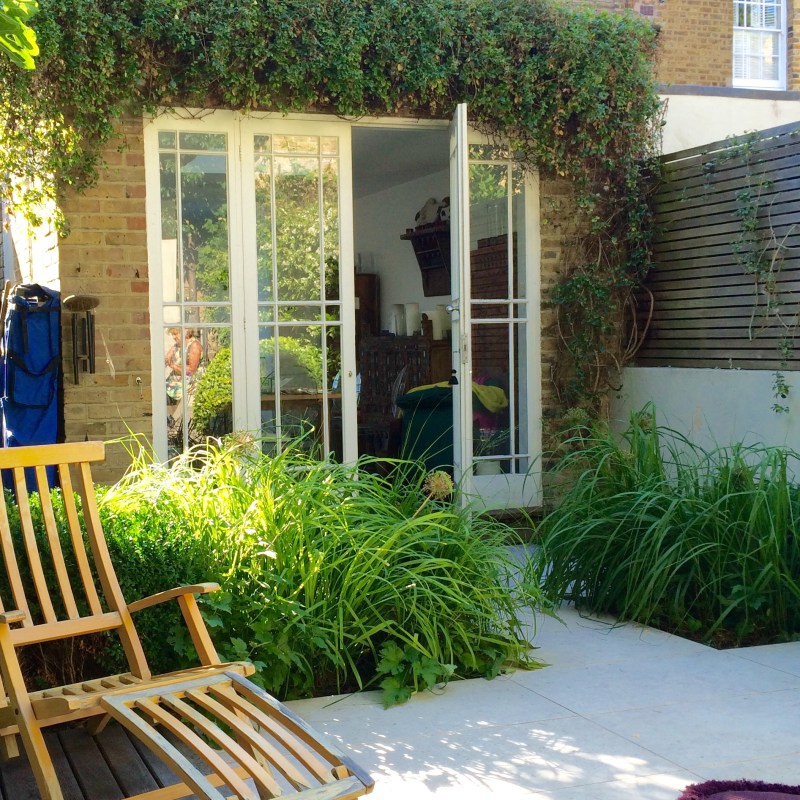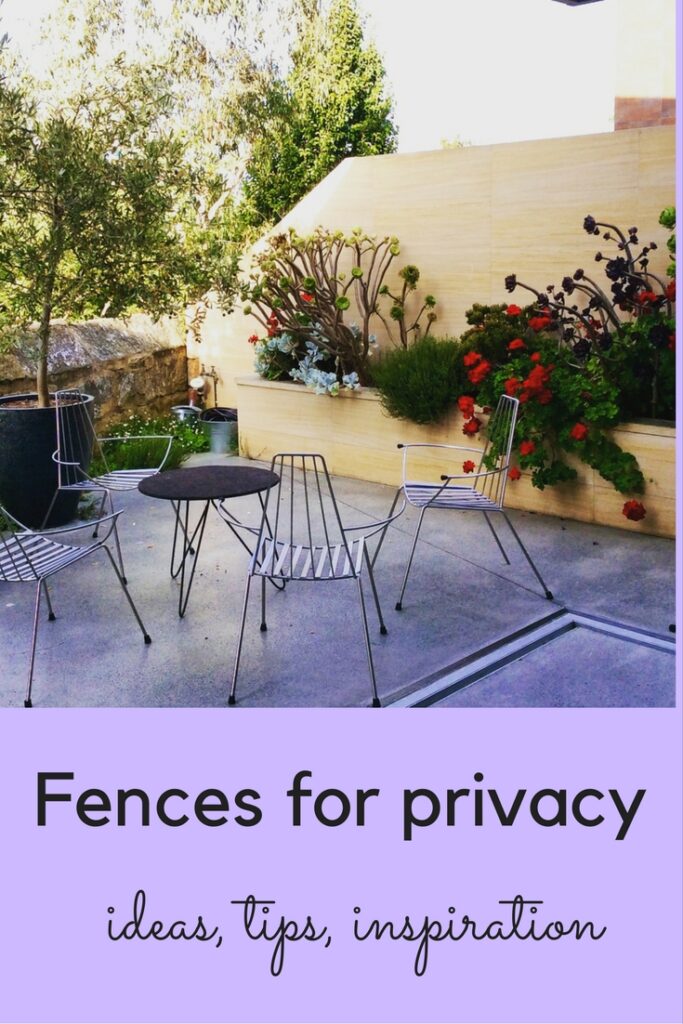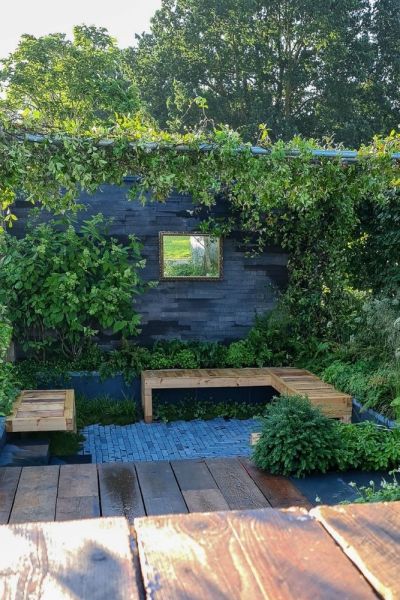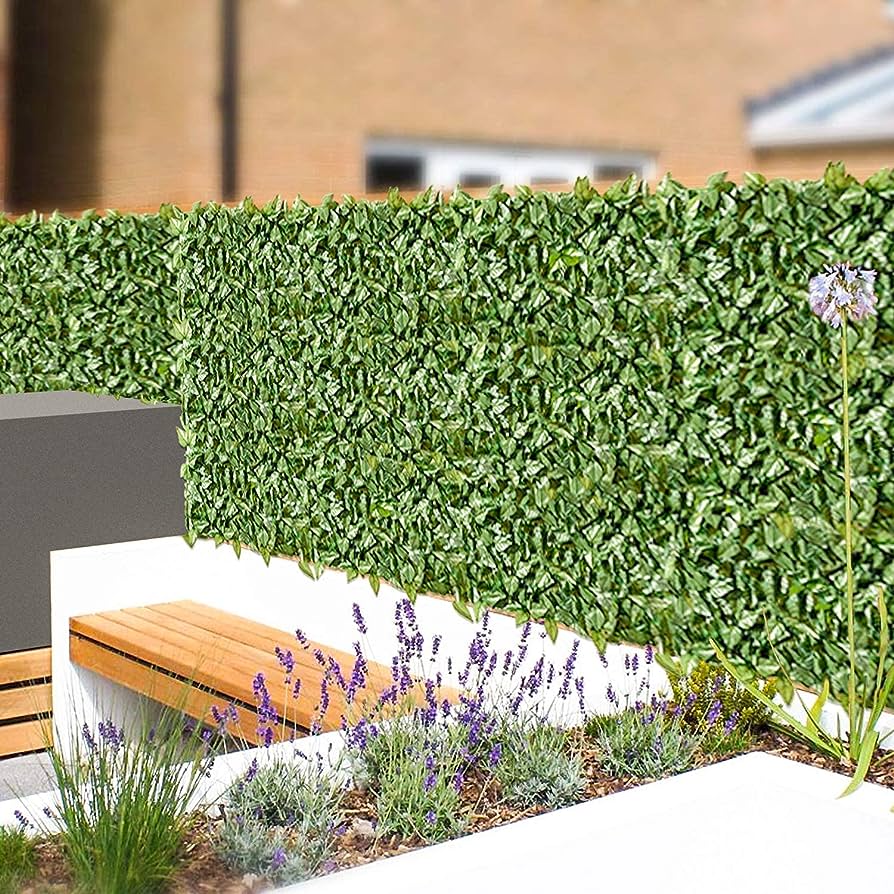Looking to combine privacy and greenery in your outdoor space? Look no further than trellis fences. These versatile fence types not only provide a sense of enclosure but also offer a perfect framework for climbing plants, adding a touch of natural beauty to your surroundings. In this blog post, we will dive into the intricacies of trellis fences, discussing their various types, sizes, shapes, materials, and most importantly, how they can be customized to suit your specific needs and preferences. Get ready to transform your outdoor area into a private oasis while enjoying the beauty of nature with trellis fences.
Overview of Trellis Fences
What are Trellis Fences?
Trellis fences are a type of fence that combines functionality with aesthetics. They are constructed with a framework of vertical and horizontal slats or lattice panels, allowing climbing plants to grow onto and through the fence. Trellis fences provide privacy, support for climbing plants, and can serve as a visually appealing addition to any outdoor space.
Benefits of Trellis Fences
One of the key benefits of trellis fences is their ability to combine privacy with greenery. By allowing climbing plants to grow, trellis fences can create a natural screen that provides privacy while adding beauty to your yard. The lattice design of the fence also allows air circulation, making it a great option for areas where you want some privacy without feeling closed off.
Trellis fences are also versatile and can be used in various areas of your property, such as around a patio or garden, as a boundary fence, or as a decorative feature. They can be customized to match your style and the overall theme of your outdoor space.
Different Types of Trellis Fences
There are several types of trellis fences to choose from, each with its own unique characteristics and materials.
-
Wooden Trellis Fences: These are the most common type of trellis fences and are known for their natural beauty and classic appeal. They can be made from various types of wood, such as cedar or pressure-treated pine, and can be stained or painted to match your preferences.
-
Metal Trellis Fences: Metal trellis fences are durable and provide a more modern and sleek look. They can be made from materials like steel or aluminum and offer a long lifespan with minimal maintenance.
-
Vinyl Trellis Fences: Vinyl trellis fences are lightweight, easy to clean, and resistant to rot, fading, and pests. They are a low-maintenance option that can be customized in various styles and colors.
Combining Privacy with Greenery
Why Choose Trellis Fences?
If you value both privacy and aesthetics, trellis fences provide the perfect solution. They offer a unique combination of a functional privacy screen and a vertical garden. Trellis fences allow you to enjoy a secluded outdoor space while adding a touch of nature to your surroundings.
Enhancing Privacy with Trellis Fences
Trellis fences can effectively enhance privacy by creating a natural barrier through the use of climbing plants. As the plants grow and intertwine with the lattice panels, they form a dense screen that blocks the view from the outside. This can be particularly advantageous if you have close neighbors or if you live in a busy area where privacy is a priority.
Adding Greenery to Your Fences
One of the major advantages of trellis fences is the opportunity to incorporate greenery into your outdoor living space. By allowing climbing plants to grow on the trellis, you can create a vertical garden that adds beauty and freshness to your surroundings. The plants can also provide additional shade and help to cool down the area during hot summer months.

Types of Trellis Fences
Wooden Trellis Fences
Wooden trellis fences are a popular choice due to their natural beauty and versatility. They can be constructed from various types of wood, such as cedar, which is known for its durability and resistance to decay. Wooden trellis fences can be stained or painted to match your desired aesthetic, and they can complement a wide range of architectural styles.
Metal Trellis Fences
Metal trellis fences offer a contemporary and sleek look to your outdoor space. They are made from materials such as steel or aluminum, which are known for their strength and durability. Metal trellis fences require minimal maintenance and can withstand harsh weather conditions. They are often chosen for their modern and industrial appeal.
Vinyl Trellis Fences
Vinyl trellis fences are a low-maintenance and durable option. They are resistant to rot, fading, and pests, making them a popular choice for those who want a hassle-free fence. Vinyl trellis fences can be found in various styles and colors, allowing you to personalize your outdoor space to your liking. They are lightweight and easy to install, making them a practical choice for DIY enthusiasts.
Factors to Consider When Choosing Trellis Fences
Property Size and Layout
Before selecting a trellis fence, it is essential to consider the size and layout of your property. Determine the dimensions of the fencing area to ensure you choose a trellis fence that fits. Additionally, consider any obstacles or unique features in your yard that may affect the installation of the fence, such as trees or slopes.
Desired Level of Privacy
Consider the level of privacy you desire when choosing a trellis fence. Assess the height of the fence and the density of the lattice panels to ensure they provide the desired level of privacy. Keep in mind that some climbing plants may take time to fully cover the trellis and provide the desired privacy screen.
Climbing Plants and Vegetation
When selecting a trellis fence, consider the types of climbing plants and vegetation you plan to use. Different plants have varying growth patterns and attachment methods, so choose a trellis fence with a lattice design that accommodates your preferred plants. Ensure the trellis fence provides adequate support for the weight and growth habits of your chosen plants.

Installing Trellis Fences
Preparation and Planning
Before installing a trellis fence, it is important to plan and prepare the area. Start by marking the boundaries and clearing any vegetation or obstructions. Measure the area and determine the number of fence panels and posts needed. Check with local regulations and obtain any necessary permits or permissions for fence installation.
Choosing the Right Materials
Selecting the appropriate materials is crucial for a successful trellis fence installation. Consider factors such as the climate in your area, the desired level of durability, and your maintenance preferences. Choose materials that are suitable for outdoor use, resistant to weather conditions, and low-maintenance. Depending on the chosen material, acquire the necessary tools and equipment for installation.
Step-by-Step Installation Guide
-
Begin by marking the desired location of the fence posts. Use a post hole digger to create holes that are deep enough to provide stability.
-
Insert the posts into the holes, ensuring they are plumb and level. Fill the holes with concrete to secure the posts in place. Allow the concrete to cure according to the manufacturer’s instructions.
-
Attach the trellis panels to the posts using screws or brackets, following the manufacturer’s guidelines. Ensure the panels are evenly spaced and securely attached.
-
If desired, add additional supports or crosspieces to enhance the stability of the trellis fence.
-
Once the trellis panels are installed, it’s time to plant your chosen climbing plants or vegetation. Position them at the base of the trellis fence and secure them to the lattice panels using soft ties or plant clips.
-
Regularly water and maintain the climbing plants to encourage healthy growth and coverage of the trellis fence.
Maintaining Trellis Fences
Regular Cleaning and Maintenance
To keep your trellis fence looking its best, regular cleaning and maintenance are essential. Remove any debris or leaves that accumulate on the trellis panels, as they can hinder the growth of climbing plants. Use a soft brush or hose to gently clean the fence regularly. Additionally, inspect the trellis fence for any damage and make repairs as needed.
Preventing Plant Overgrowth
While climbing plants add beauty and privacy to your trellis fence, it’s important to prevent overgrowth. Trim and prune the plants regularly to maintain their desired shape and prevent them from becoming unruly. Remove any dead or diseased plant parts promptly to prevent the spread of pests or diseases.
Repairing Damaged Sections
Over time, trellis fences may experience damage or wear. If you notice any broken or damaged sections, address them promptly to maintain the integrity of the fence. Repair or replace damaged trellis panels, posts, or supports as needed. Regularly inspect the fence for signs of wear or damage and make repairs as necessary to ensure its longevity.

Creative Ideas for Using Trellis Fences
Vertical Gardening with Trellis Fences
Make the most of your trellis fence by incorporating vertical gardening techniques. Use the lattice panels to create a living wall of plants, herbs, or flowers. Grow vining vegetables such as tomatoes or squash to maximize space in your garden. Vertical gardening with trellis fences allows you to create a stunning display while optimizing your outdoor area.
Creating Outdoor Privacy Areas
Trellis fences can be used to create intimate and private outdoor spaces. Place a trellis fence strategically to partition off a seating area, patio, or outdoor dining space. Add comfortable furniture, string lights, and other accessories to transform the area into a cozy retreat. With a trellis fence, you can enjoy privacy while still benefiting from the beauty of nature.
Decorative Features with Trellis Fences
Trellis fences can be more than just functional privacy screens; they can also serve as decorative elements in your outdoor design. Paint the trellis panels in vibrant colors to add a pop of personality to your yard. Incorporate decorative elements such as hanging baskets or ornaments to further enhance the visual appeal of the trellis fence.
Trellis Fences vs. Traditional Fences
Pros and Cons of Trellis Fences
Pros:
- Combination of privacy and greenery
- Aesthetically pleasing
- Versatile and customizable
- Allow air circulation
- Can provide shade
- Lightweight and easy to install
Cons:
- Require regular maintenance
- May take time for climbing plants to cover the fence fully
- Limited privacy until plants grow and cover the trellis
Pros and Cons of Traditional Fences
Pros:
- Immediate privacy and enclosure
- Can provide a sound barrier
- Variety of materials and styles available
- Low-maintenance options, such as vinyl or metal fences
- Can be more secure and offer better protection
Cons:
- May appear visually closed off
- Limited greenery or natural aesthetics
- Potential for reduced air circulation
- Can block views of the surrounding landscape
Choosing the Right Fence for Your Needs
When deciding between trellis fences and traditional fences, consider your specific needs and preferences. Trellis fences are perfect if you want privacy combined with a natural and visually appealing element. If immediate privacy and security are your main concerns, a traditional fence may be more suitable. Evaluate factors such as the purpose of the fence, desired level of privacy, aesthetics, maintenance requirements, and budget to make an informed decision.
Popular Climbing Plants for Trellis Fences
Clematis
Clematis is a versatile and popular climbing plant for trellis fences. It comes in a wide range of colors and flower shapes, adding a stunning visual display to your trellis fence. Clematis is easy to grow and can thrive in various climates. Ensure proper support for the plant’s vines as they climb the trellis to maximize its growth potential.
Honeysuckle
Honeysuckle is another popular choice for trellis fences. It produces fragrant flowers in various colors and attracts hummingbirds and butterflies to your outdoor space. Honeysuckle is easy to care for and can tolerate a range of growing conditions. Regular pruning helps control its growth and keeps it from becoming invasive.
Wisteria
Wisteria is renowned for its cascading clusters of beautiful flowers and its ability to cover trellises with its vigorous growth. It requires a sturdy trellis as support, as its vines can become heavy. Wisteria is a deciduous plant that blooms in spring and offers a stunning display of color and fragrance. Regular pruning is important to maintain its shape and prevent excessive growth.
Trellis Fences in Landscape Design
Trellis Fences as Garden Dividers
Trellis fences can be used as stylish dividers within your garden. They can separate different areas or highlight specific features, such as a vegetable garden or a flower bed. By incorporating trellis fences as garden dividers, you can add visual interest and create a sense of structure to your landscape design.
Enhancing Curb Appeal with Trellis Fences
Trellis fences can greatly enhance the curb appeal of your property. Install a trellis fence near the entrance of your home or along the driveway to create a welcoming and visually appealing focal point. Plant colorful climbing flowers or vines to add a vibrant touch to the trellis fence, making it an eye-catching feature for passersby.
Creating Outdoor Living Spaces with Trellis Fences
Utilize trellis fences to create outdoor living spaces that are cozy, private, and inviting. Combine the trellis fence with comfortable outdoor furniture, potted plants, and outdoor lighting to transform the space into an extension of your home. Whether it’s a lounge area, a dining space, or a peaceful retreat, trellis fences can help create an outdoor living space that suits your lifestyle.

Conclusion
Trellis fences offer a unique combination of privacy and greenery, allowing you to enjoy the beauty of climbing plants while creating a private outdoor space. With various types, materials, and styles to choose from, trellis fences can be customized to match your aesthetic preferences and complement your property. By considering factors such as property size, desired level of privacy, and the choice of climbing plants, you can select the perfect trellis fence for your needs. Regular maintenance and care will ensure the longevity and beauty of your trellis fence, providing you with a functional and visually appealing addition to your outdoor space.
Common Questions and Answers
What is the average lifespan of a trellis fence?
The lifespan of a trellis fence depends on the materials used and the level of maintenance. Wooden trellis fences can last 10-20 years with regular maintenance, while metal and vinyl trellis fences can have a lifespan of 20-30 years or more.
Can a trellis fence provide enough privacy?
Trellis fences can provide privacy, especially when climbing plants cover the lattice panels. However, the level of privacy can vary depending on the density of the plants and their growth speed.
How do I choose the right climbing plants for my trellis fence?
When choosing climbing plants for a trellis fence, consider factors such as growth habit, sunlight requirements, and compatibility with your climate. Research different types of climbing plants and select ones that suit your preferences and the conditions of your outdoor space.
Are trellis fences more expensive than traditional fences?
The cost of trellis fences can vary depending on the materials used and the size of the fence. Generally, trellis fences can be more expensive than basic traditional fences due to the additional materials and construction required for the lattice panels.
What tools do I need to install a trellis fence?
The tools needed to install a trellis fence may include a post hole digger, level, screwdriver or drill, concrete mix, and pruning shears. The specific tools required may vary depending on the type of trellis fence and the installation method.
Can I paint or stain a wooden trellis fence?
Yes, you can paint or stain a wooden trellis fence to match your desired aesthetic. Ensure that the paint or stain is suitable for outdoor use and choose colors that complement your outdoor space.
Do trellis fences require any special maintenance?
Trellis fences require regular maintenance to ensure their longevity and appearance. This includes cleaning the fence, trimming and pruning climbing plants, and repairing any damage or wear that may occur over time.
Can I use a trellis fence for security purposes?
While trellis fences can offer some level of security by providing a physical barrier, they are not typically used as primary security fences. For enhanced security, consider choosing a more robust and secure fencing option.
What are some alternatives to trellis fences for adding greenery?
Some alternatives to trellis fences for adding greenery include living walls, vertical gardens, or standalone planters. These options can provide a similar vertical gardening effect without the need for a supporting lattice fence.
Can I install a trellis fence without climbing plants?
Yes, trellis fences can still be visually appealing and functional without climbing plants. The lattice panels themselves can add interest and provide partial privacy. However, incorporating climbing plants can maximize the beauty and natural aspect of the trellis fence.
